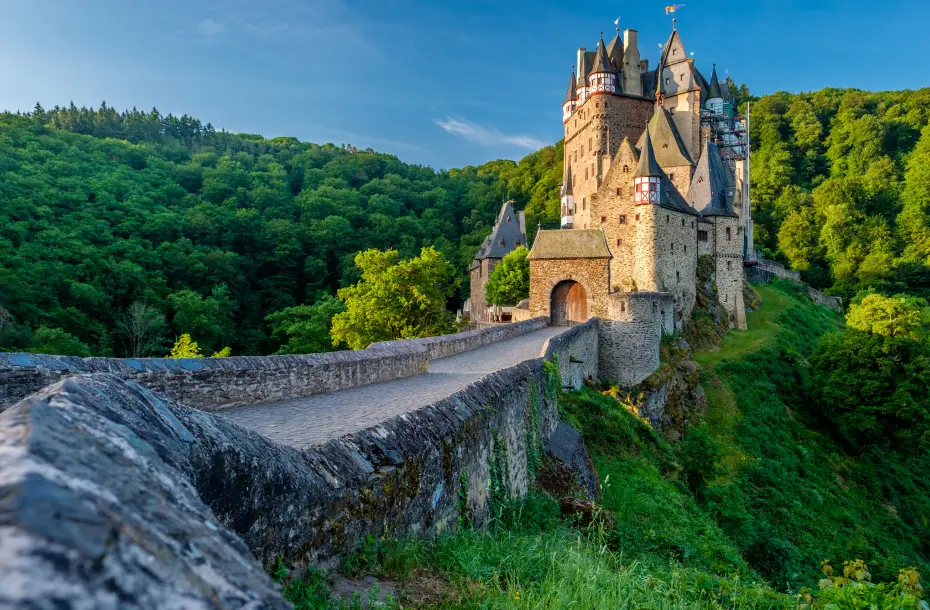German ferry routes provide an excellent way to travel both locally and internationally, connecting Germany to Scandinavia, the UK and the Baltics. Whether you're bringing your vehicle for a road trip through Europe or looking for a relaxing sea journey, ferries offer convenience, comfort and affordability. With modern vessels, frequent departures and onboard amenities, ferry travel is a stress-free alternative to flying or driving long distances.
Benefits of traveling to Germany by ferry
- Easy vehicle transport: Bring your car, motorcycle or campervan
- Eco-friendly alternative: Lower CO₂ emissions compared to flights
- Relaxing & scenic: Enjoy Baltic Sea views and onboard entertainment
- Affordable fares: Competitive prices compared to other travel methods
- Multiple departure points: Germany is well-connected to various European countries
Ferry connections to Germany
International ferry routes to Germany
Popular ferry routes to Germany
- Sweden - Germany: Trelleborg Rostock. Duration: 6-7 hours. Operators: Stena Line, TT-Line
- Sweden - Germany: Malmö Travemünde. Duration: 9 hours. Operators: Finnlines
- Finland - Germany: Helsinki Travemünde. Duration: 30 hours. Operators: Finnlines
- Denmark - Germany: Rødby Puttgarden. Duration: 45 minutes. Operators: Scandlines
- Norway - Germany: Oslo Kiel. Duration: 20 hours. Operators: Color Line
- Lithuania - Germany: Klaipeda Kiel. Duration: 20 hours. Operators: DFDS Seaways
- UK - Germany: Harwich Hamburg (via Hook of Holland & rail). Duration: 14 hours. Operators: Stena Line
These ferry services offer multiple daily, overnight and long-haul crossings, giving travelers flexibility and convenience.
Transportation after arriving in Germany
Once you arrive in Germany, you have multiple options to continue your journey:
- High-speed trains (ICE): Quick connections between major cities
- Regional trains (RB & RE): Convenient transport for short distances
- Metro and trams: Available in cities like Berlin, Hamburg and Munich
- Ride-sharing services: Uber and local taxi apps operate in major cities
These options make it easy to explore Germany comfortably and efficiently.
Must-see attractions in Germany
Germany is home to rich history, stunning landscapes and vibrant cities. Whether you're visiting for the first time or returning, there is always something new to explore.
Berlin
- Brandenburg Gate – A symbol of German unity
- Reichstag Building – The seat of the German Parliament
- East Side Gallery – A famous section of the Berlin Wall
Munich
- Marienplatz – The heart of the city with stunning architecture
- Neuschwanstein Castle – A fairytale castle near Munich
- Oktoberfest – The world’s largest beer festival
Hamburg
- Speicherstadt – A UNESCO-listed historic warehouse district
- Elbphilharmonie – A modern architectural masterpiece
- Reeperbahn – The city’s famous nightlife district
Cologne
- Cologne Cathedral – A breathtaking Gothic masterpiece
- Hohenzollern Bridge – A scenic spot covered in love locks
- Chocolate Museum – Perfect for sweet lovers
Frankfurt
- Römerberg – A charming medieval square
- Main Tower – Offers panoramic city views
- Goethe House – The birthplace of the famous German writer
FAQs about German ferry routes
How long does the ferry from Sweden to Germany take?
Ferry crossings from Trelleborg to Rostock take 6-7 hours, while Malmö to Travemünde takes around 9 hours.
Can I take my car on German ferry routes?
Yes, all ferries allow vehicles, including cars, motorbikes and campervans.
Do I need a passport to travel to Germany by ferry?
Yes, a valid passport or national ID is required for international routes.
Are there overnight ferries to Germany?
Yes, long-haul ferries from Finland, Norway and the UK operate as overnight journeys with cabins.
Are there onboard amenities on German ferries?
Yes, ferries include restaurants, bars, duty-free shops and comfortable cabins.
Which German ferry port is best for traveling to Scandinavia?
The Rostock and Travemünde ports offer the best connections to Sweden, Finland and Denmark.
